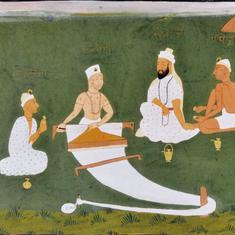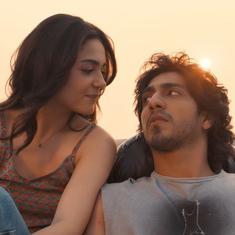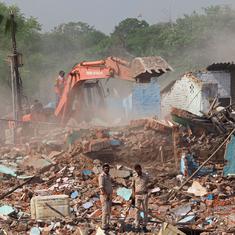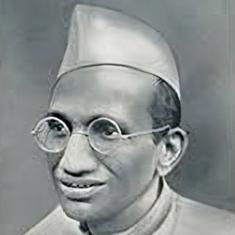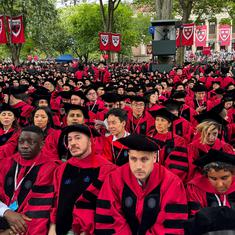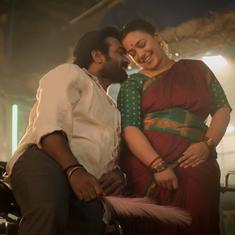Raghunathrao Dhondo Karve was already over 44 years of age when he joined the Bombay–Bahrain Company. Prior to that, he had spent 15 months being jobless and would naturally have heaved a sigh of relief at landing a job. With financial support having arrived, he immediately began publishing Samaaj-swaasthya. However, Malatibai’s ill-health flared up in 1928 and her medical expenditure increased. Besides, while he was in the company, he was required to visit the Gulf of Iran along with Rosenthal Saheb. Thus, in 1919 he went to Paris; in 1925 to Nairobi on the invitation of his brother Dr Shankarrao, and from 1926 to 1932 he visited the Gulf of Iran along with his boss. During his lifetime, therefore, he travelled to three foreign countries.
Samaaj-swaasthya came out with its first issue on 15 July 1927. Its size was 7” X 5” and remained the same till the last issue of November 1953, which was published after his death. The earliest issues carried the image of a lighthouse on the cover. Later, it carried the sketch of a naked woman, and still later, of a number of naked women. The number of pages would keep fluctuating. For the 26 years and four months of its existence, it would be put into post on the 15th of every month. He was a disciplined person by nature anyway, but also had as his ideal the discipline that was observed by the magazine Kirloskar. In 1944, the Second World War caused the Depression across the world and prices began to soar, causing a shortage of newsprint. This impacted Samaaj-swaasthya too, making the already slim magazine slimmer. The result was that the August– September–October issue was required to be published as a joint issue. Except for this one anomaly, Samaaj-swaasthya was always published on time.
In its inaugural issue, Raghunathrao laid down the objectives and policies of the magazine in the following words:
The objective of this magazine is to hold discussions on the physical and mental health of individuals and of society and what we should do about maintaining it. There are certain subjects which other journalists hesitate or fear to discuss in print, however important they may be. As ordinary readers find it extremely difficult to get information on those subjects, our intention is to remove those difficulties. Our information shall not be of philosophical nature only, but it will be practically useful. The word kaam-shaastra has been misused, but we are compelled to use this word to mean “a scientific examination of the sexual urge”; there is no reason, therefore, for anybody to take offence on this point.
The path that Raghunathrao had chosen was difficult. He rustled up this magazine with the purpose of educating the masses and for that he was always required to scrape and scrounge for funds. If a magazine has to run, the editor must have an entire team of writers available. Like-minded writers must be brought together so that there is never a shortage of articles. Raghunathrao believed he should have various kinds of writers available to him and all these writers should be compensated for their efforts. He believed that since he was not in a position to pay them, he had no right to ask them to write. In spite of knowing this, Bhaskarrao Jadhav, Madhavrao Bagal, Sahridaya Mahad and a few others would send their articles voluntarily, which Raghunathrao published in Samaaj-swaasthya. Shakuntala Paranjape also offered invaluable help in this matter. Raghunathrao would write most of the matter for the magazine himself. Along with his original writing, there would also be articles translated from French.
To underline the message that truth is always naked, he decided to print pictures of naked women on the cover. But Raghunathrao has written that the managers of many printing presses would refuse to accept such pictures despite being offered money in advance.
Bombay Vaibhav, the printing press of the Servants of India Society established by the late GK Gokhale had agreed to print our magazine (not for free); but when its manager R Dewale saw our manuscript, he said that our opinions were far too revolutionary and refused to print it. As a result, we could not get the print quality we had wanted, and the publication was delayed too. And the members of that Society consider themselves liberal.
The same issue says that “even a backward magazine like the monthly Manoranjan refused to carry our paid advertisements.” Thus, even during its early period, the managers of printing presses as well as the owners of contemporary magazines refused to cooperate with Raghunathrao. Even after it started getting published regularly, it had to confront many obstacles. It was quite understandable that opposition should come from the ultra-orthodox with their mildewed ideologies; but it doesn’t appear that those who considered themselves progressive were much in favour, or that Raghunathrao gained any active support from them.
The fact is that during those times nobody talked much about heterosexual relationships, sexually transmitted diseases, and certainly never wrote on it. There was just one autobiography of Nana Phadnis that talked about his extramarital indulgences, but that was clearly an exception. Our culture had Rama as a paragon of virtue and fidelity to one woman; but that never meant that all men were embodiments of virtue. Our great writers have admonished, “Never give your books, money or woman to another; if you do, they rarely come back; and even if they ever do, they return in a wrecked and contaminated state.” These great writers would have felt the need for this admonition only because of what they saw in the society around them, surely.
In Mrchchha-katika, the depiction of the courtesan Vasantasena and the married man Charudutt can be taken as representing reality. When Tukaram counselled, “parviya naari rukmai samaan” (A woman not one’s own is sacred), he was talking in the context of prostitutes. Also, when the heroine of a laavani expresses her sexual passion by telling the young, shelter-seeking traveller that her husband is out doing guard duty and her mother-in-law at home suffers from night-blindness, it sounds quite natural. All of this obviously means that heterosexual relationships have always existed in society, but they cannot be expressed openly, resulting in incurable diseases that are suffered in silence. This would happen on quite a large scale. Raghunathrao had himself seen such people in the hostel during his college days. That was when he had realised the extreme need for creating public awareness on the issues of sexually transmitted and other incurable diseases as also on the alarmingly burgeoning population.
Dr Robinson and Margaret Sanger in America and Marie Stopes, Norman Haire, Ellis and others were either pondering over this subject scientifically or had actually opened clinics for dispensing advice and treatment. In our parts, there was nobody either offering scientific guidance or even writing about it. This was the vacuum that Raghunathrao tried to fill by bringing out his magazine Samaaj-swaasthya and by starting a birth-control centre at Parel earlier.

Excerpted with permission from RD Karve: The Champion of Individual Liberty, Anant Deshmukh, translated from the Marathi by Nadeem Khan, Penguin Random House India.
